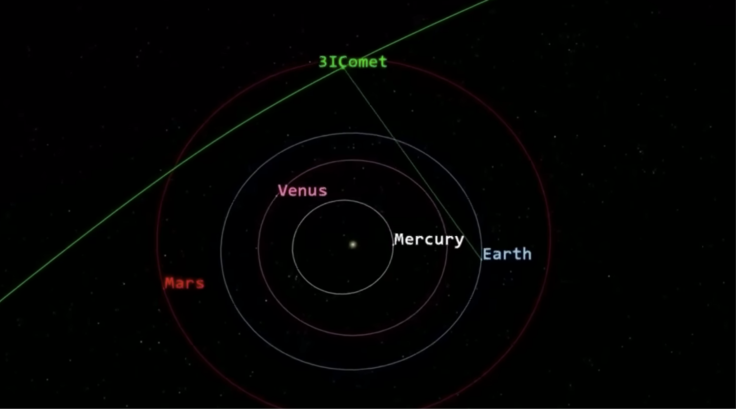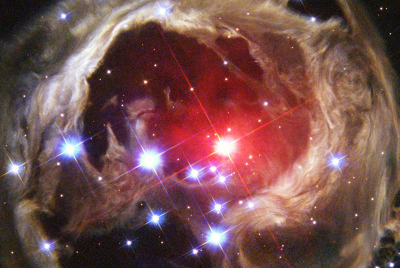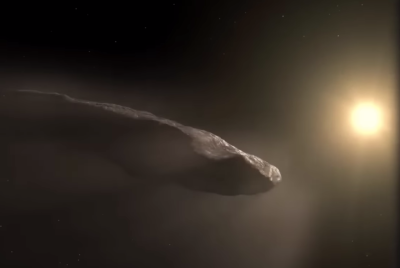3I/ATLAS Sparks Global Alarm: Truth Behind the Mysterious Interstellar Object Now Targeted by NASA and UN Teams
Scientists confirm that the fast-moving interstellar object 3I/ATLAS will safely pass Earth, but its unusual makeup has prompted NASA, the UN, and top observatories to launch a coordinated investigation.

A newly discovered interstellar object, officially named 3I/ATLAS (C/2025 N1), has drawn global attention after NASA confirmed it as only the third known visitor from beyond our Solar System.
Despite online speculation and sensational headlines, NASA has reassured the public that 3I/ATLAS poses no threat to Earth.
The object, officially designated C/2025 N1 (ATLAS), was first spotted on July 1, 2025, by the Asteroid Terrestrial-impact Last Alert System (ATLAS) telescope in Chile.
NASA said the object's hyperbolic trajectory indicates it originated from another star system, similar to earlier interstellar travellers ʻOumuamua (2017) and Borisov (2019), which also briefly passed through the Solar System.
NASA Confirms No Threat to Earth
According to NASA, 3I/ATLAS will reach its closest approach to the Sun, or perihelion, on October 30, at about 1.4 astronomical units (AU).
The comet will remain more than 1.8 AU from Earth--roughly 270 million kilometres away--and poses no threat of impact.
Images captured by the Hubble Space Telescope revealed a faint coma and dust tail, suggesting that 3I/ATLAS behaves like a typical comet despite its alien origin.
The Hubble team estimated its nucleus to be under 5.6 kilometres wide.
Spectral data from the James Webb Space Telescope (JWST) indicate the comet's coma contains an unusually high level of carbon dioxide (CO₂), with relatively low water-ice activity.
A recent preprint on arXiv suggests that this chemical imbalance could indicate the object formed in a much colder, more carbon-rich region than comets in our own Solar System.
Speculation and Public Alarm
Despite scientific assurances, the discovery has sparked online speculation and dramatic headlines suggesting 3I/ATLAS could be artificial.
Harvard astrophysicist Avi Loeb told readers of his Medium column that the object's unusual speed and composition merit close attention. However, he added, 'The simplest explanation remains that it's a comet.'
Some media outlets amplified his comments, with The Times of India quoting Loeb in jest, urging people to 'take vacations before October 29.'
NASA scientists, however, have moved quickly to dispel any talk of extraterrestrial origins.
Tom Statler, a senior scientist at NASA's Planetary Science Division, told The Guardian that 'it looks like a comet, it does comet things--the evidence is overwhelmingly pointing to this object being a natural body.'
UN and International Space Agencies on Alert
The arrival of 3I/ATLAS has prompted coordination among international observatories and the United Nations Office for Outer Space Affairs (UNOOSA), which monitors space phenomena with planetary implications.
While the UN has not launched any formal mission, scientists say the event is being treated as a global monitoring exercise for future interstellar object detections.
NASA and the European Space Agency (ESA) are leading the effort to track 3I/ATLAS as it passes through the inner Solar System.
According to Reuters, NASA has even considered diverting the Juno spacecraft from its current orbit around Jupiter to study the object when it comes within 53 million kilometres of the gas giant in March 2026.
Why the Discovery Matters
Each confirmed interstellar object gives scientists a rare opportunity to study material from beyond the Solar System--and possibly from the debris of other planetary systems.
As Sky & Night Magazine noted, the discovery of 3I/ATLAS raises the odds of finding many more such visitors in the coming decade, as new telescopes come online.
Researchers are particularly intrigued by its high CO₂-to-water ratio, which could hint at exotic formation environments around distant stars.
The JWST team plans to continue spectroscopic monitoring after the comet swings past the Sun and re-emerges in December.
A Celestial Visitor, Not a Threat
While 3I/ATLAS has inspired online alarm, astronomers stress that the object represents a scientific milestone, not a danger.
The Associated Press reported that new images from the Gemini South telescope in Chile show the comet's tail brightening, a typical sign of solar heating as it nears perihelion.
NASA expects 3I/ATLAS to leave the Solar System by early 2026, never to return. Until then, scientists around the world are training telescopes to capture every possible detail of this fleeting messenger from the stars.
As The Weather Network put it, 3I/ATLAS's offers a humbling reminder of how small our Solar System is in the vastness of the galaxy--and how often the universe surprises us.'
© Copyright IBTimes 2025. All rights reserved.





















